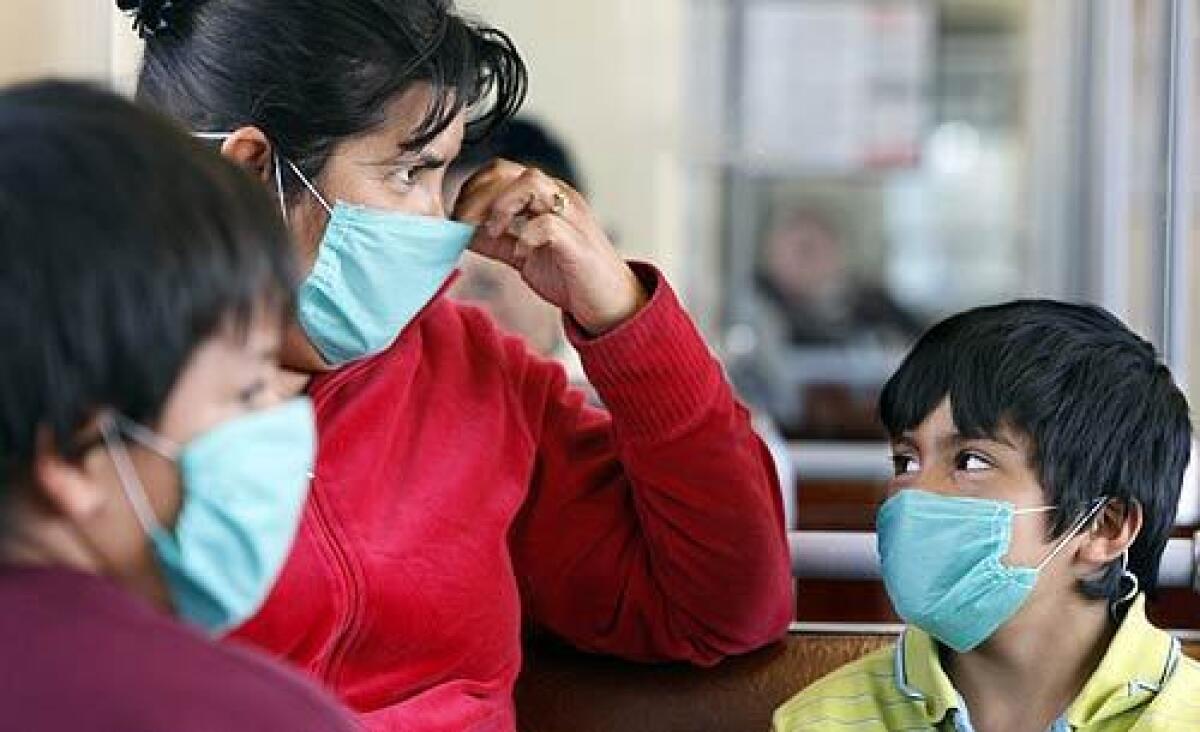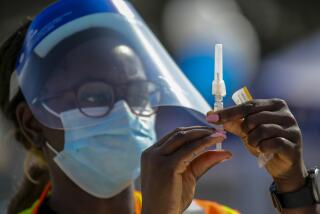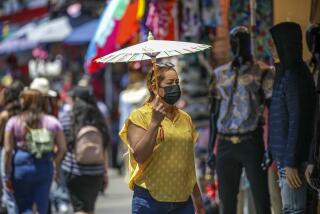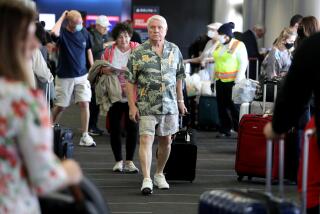Do face masks help prevent swine flu infection?

Don’t count on those disposable masks to completely protect you against the swine flu percolating around the globe.
Many people in Mexico City, as well as travelers to and from Los Angeles, have been seen wearing mouth and nose protection of one type or another in recent days.
Most were wearing face masks, which are loose-fitting and designed largely to help stop droplets from spreading from the person wearing the mask. They also protect the wearer’s mouth and nose from splashes. They are not created to protect the wearer from breathing in very small particles.
Respirators, on the other hand, are made for just that. They are similar in appearance to the relatively inexpensive face masks but are designed specifically to protect the wearer from breathing in such particles. These masks, known as N95 for its filtering ability, fit more snugly on the face than face masks so that most air is breathed through the filter material. They work best if they are fitted specifically to the person wearing the mask.
A respirator that fits snugly on the face can filter out small particles that can be inhaled around the edges of a face mask. But it’s easier to breathe through a face mask than a respirator over a long period of time, said experts at the Centers for Disease Control and Prevention.
Federal health officials said Monday that they, quite frankly, didn’t know how helpful either type of devices are in preventing swine flu infection.
If used correctly, masks and -- more likely -- respirators may indeed reduce the risk of getting influenza, according to information released from the CDC. But for people who live in areas with confirmed cases, there is no single action that will provide complete protection. It simply isn’t practical to wear a mask all the time, and they are not 100% foolproof.
Face masks and respirators are most useful for people who are in crowded settings, such as classrooms or airplanes, where they will protect the mouth and nose from germs and reduce the likelihood of coughing or sneezing on other people.
Face masks and respirators are sometimes recommended for people who are in close contact with an infected person. “Close contact” is defined as three feet or less by the World Health Organization and six feet or less by the U.S. Occupational Safety and Health Administration.
Face masks and respirators should be worn once, according to the World Health Organization. (Look for face masks labeled for surgical, dental, medical procedure, isolation or laser use.)
Health experts note that face masks and respirators should be used along with other precautions, such as frequent hand-washing, covering coughs, staying at home if ill and avoiding crowds.
For more information on face masks and respirators, see these Web pages from the CDC:
www.cdc.gov/flu/professionals/infectioncontrol/maskguidance.htm
www.cdc.gov/Features/MasksRespirators/
www.cdc.gov/swineflu/masks.htm
More to Read
Sign up for Essential California
The most important California stories and recommendations in your inbox every morning.
You may occasionally receive promotional content from the Los Angeles Times.










